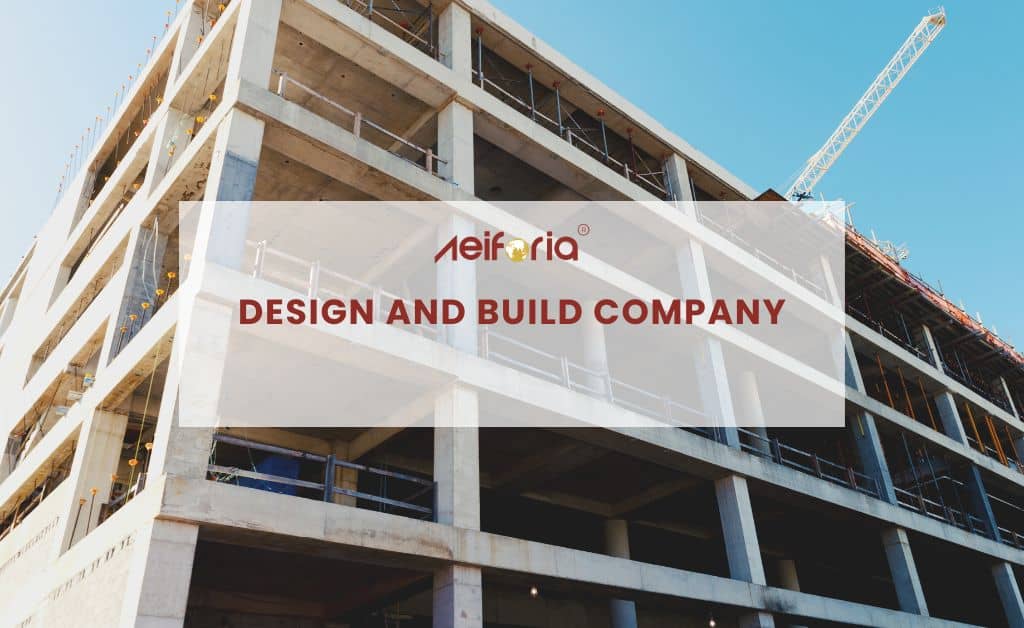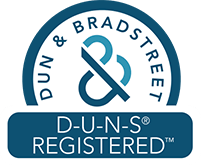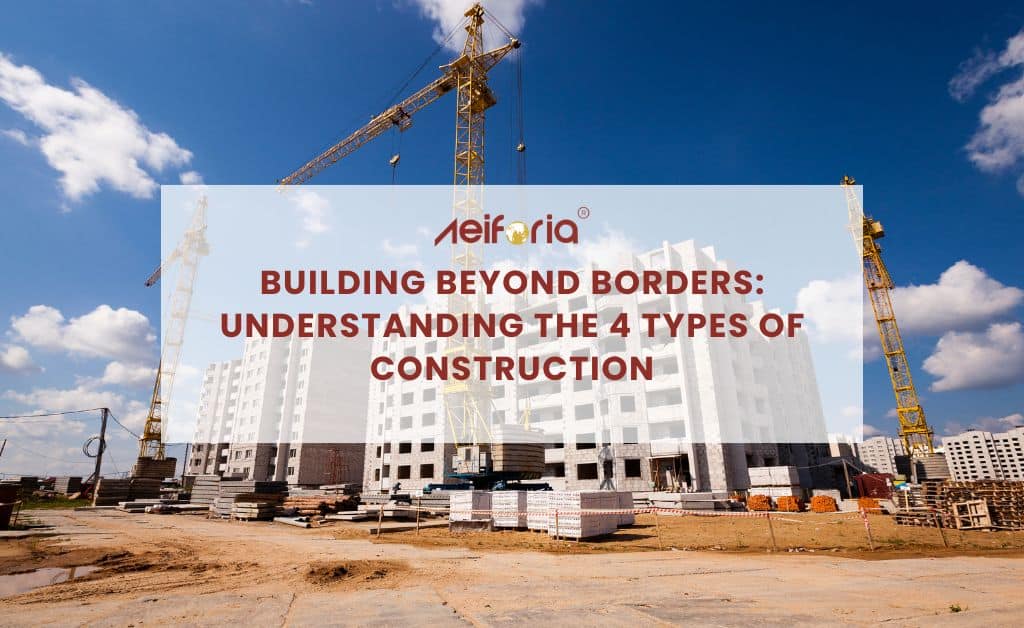
Design and Build Company
What is a Design and Build Company: A Complete Guide
When constructing a building, there are typically two ways to go about it: the traditional method, where the design and construction phases are separate, or the design-build approach, where both steps are integrated into one streamlined process. In this article, we'll delve into what a design and build company are, how the process works, and the benefits of choosing this method over traditional construction.
What is Design-Build
Design-build is a project delivery method in which a single entity, typically a design-build firm or a general contractor, is responsible for both the design and construction of a project. This approach differs from the traditional design-bid-build method, in which the design and construction phases are handled by separate entities.
In a design-build project, the company takes on all aspects, from conceptual design to final construction. This can increase efficiency, as the design-build firm understands the project comprehensively and can make real-time adjustments. Additionally, this approach can result in a more cohesive final product, as the design-build firm controls both the design and construction phases.
Design-build is often used in large-scale projects like infrastructure or commercial buildings. Still, it can also be used for smaller projects. This delivery method has gained popularity recently due to its potential for cost savings, reduced project timelines, and increased accountability.
The Design-Build Process
The design-build process typically involves the following stages:
Design-Builder Selection
The first step in the design-build process is selecting a design-builder. This is an important decision that will determine the success of your project. When choosing a design-builder, consider their experience, reputation, and communication skills. It's also important to review their portfolio and check references to ensure that they have a proven track record of delivering successful projects.
Preconstruction Planning
Once you have selected a design builder, the preconstruction planning phase begins. This phase involves developing the project scope, budget, and schedule. During this phase, it's essential to establish clear communication with the design-builder to ensure everyone is on the same page. This phase also involves identifying potential risks and developing mitigation strategies to minimize the impact on the project.
Architectural Design
The next phase in the design-build process is architectural design. This phase involves developing the design concept, creating detailed drawings and specifications, and obtaining necessary permits and approvals. During this phase, the design-builder works closely with the project owner to ensure the design meets their needs and expectations. This phase also involves value engineering, which involves finding cost-effective solutions that maintain the project's functionality and design.
Construction
The construction phase is where the design-build process comes to life. This phase involves executing the construction plan, managing the project schedule, and ensuring the work is completed to the highest quality standards. During this phase, the design-builder works closely with subcontractors and suppliers to ensure the project is completed on time and within budget. The design-builder is also responsible for ensuring the work site is safe and secure throughout construction.
Post-Construction
Once the construction phase is complete, the post-construction phase begins. This phase involves final inspections, testing, and commissioning of the project. During this phase, the design-builder works with the project owner to obtain all necessary permits and approvals. This phase also involves resolving punch list items and ensuring the project is completed to the owner's satisfaction.
Benefits of Using a Design and Build Company
Using a design and build company for your construction project offers many benefits, including:
Cost Savings
Design and building projects often result in cost savings for clients. Since the design and build team is responsible for design and construction, they better understand the cost implications of the project. This allows the team to make design decisions to keep the project within budget without compromising quality.
Time Savings
Design and building projects can also result in significant time savings. Since the design and construction phases overlap, the project can be completed much faster than traditional construction methods. This can be especially beneficial for projects that require a fast turnaround.
Streamlined Communication
Design and build projects benefit from streamlined communication. Since the entire team has been working together from the beginning of the project, communication is more efficient and effective. This helps avoid delays and ensures that any issues are addressed quickly.
Single Point of Responsibility
One of the key benefits of design and build is that there is a single point of responsibility for the project. The design and construction team ensures the project is delivered on schedule, on budget, and following the client's requirements. This means that instead of dealing with numerous contractors, the client must deal with one company if there are any concerns.
Quality Control
Design and build projects also benefit from better quality control. Since the design and build team is responsible for design and construction, they better understand how the project should be built. This means they can ensure the project meets the highest quality standards.
Reduced Risk
Design and building projects can also reduce the risk for clients. Since there is a single point of responsibility, the design and build team manages any risks associated with the project. This means the client can have greater peace of mind, knowing that the project is in good hands.
Flexibility
Design and building projects also offer greater flexibility. Since the design and construction phases overlap, changes can be made to the task more efficiently. The client can change the project without significant delays or additional costs.
Greater Collaboration
Design and build projects also benefit from greater collaboration between the design and construction teams. This means that the project is more likely to meet the client's requirements, as the entire team works to ensure that the project is delivered on time, within budget, and to the highest quality standards.
Innovative Solutions
Design and build projects also benefit from innovative solutions. Since the design and construction teams work together, they can create creative solutions to complex problems. This can result in a more innovative and unique project than traditional construction methods.
Higher Client Satisfaction
Finally, designing and building projects often result in higher client satisfaction. Since the project is delivered within the client's budget and schedule and to the highest quality standards, clients are more likely to be satisfied with the result. The streamlined communication, single point of responsibility, and greater collaboration also help to ensure that the client's vision for the project is fully realized.
Design and Build vs. Traditional Construction
Design and Build (D&B) and Traditional Construction are two common approaches to construction projects. Traditional construction involves the owner hiring an architect to design the building, then a contractor to bid on the project and ultimately build the design. The owner will have to coordinate and manage the architect and the contractor throughout the project, often resulting in longer project timelines and higher costs.
On the other hand, Design and Build is a more streamlined approach that involves the owner hiring a single company to handle the project's design and construction aspects. This single point of contact can lead to better communication, faster project timelines, and lower costs.
One of the benefits of Design and Build is that the design and construction teams work together from the start, which can lead to more efficient design solutions and better cost control. Additionally, because the Design and Build team is involved in the design process, they better understand the project's goals. They can make sure the design meets the owner's needs and budget.
How to Choose a Design and Build Company
-
Do your research: Research different design and build companies in your area. Look at their website, read reviews, and check their portfolio. Make a list of the companies that fit your requirements.
-
Ask for referrals: Ask friends, family, or neighbors if they have previously worked with a design and build company they would recommend.
-
Check credentials: Ensure your chosen company has the necessary licenses, certifications, and insurance to work in your area. This information should be available on their website or by contacting them directly.
-
Schedule a consultation: Make appointments for consultations with all of the businesses on your shortlist after you've done so. During the consultation, discuss your project, ask questions, and get a feel for their communication style and level of expertise.
-
Review proposals: After your consultation, each company should provide you with a detailed proposal outlining the scope of the work, timeline, and cost. Review each submission carefully, and compare them to each other.
-
Check references: Before making a final decision, ask each company for references from past clients. Contact these references and ask about their experience with the company, the quality of the work, and whether they stayed within the budget and timeline.
Aeiforia Architects offers various design and build services, including site analysis, conceptual design, construction documentation, construction management, and post-construction services. Their architects, engineers, and construction professionals work together to ensure that each project is completed on time, within budget, and to the highest quality standards.
One of the advantages of working with Aeiforia Architects is their commitment to sustainability. They strive to incorporate environmentally responsible practices into every project, focusing on energy efficiency, water conservation, and sustainable materials. Contact Aeiforia Architects today!
Future of Design and Build
The design and build method is becoming increasingly popular in the construction industry as more owners recognize the benefits of working with a single entity throughout the process. As technology evolves, we expect to see even more innovation in the design and build process, including virtual reality and other tools to improve collaboration and communication.
Conclusion
Choosing a design and build company can be an intelligent decision for owners who want a more efficient, cost-effective, and collaborative construction approach. With the right strategy and build company, owners can have a single point of contact throughout the entire process, resulting in a smoother, faster, and higher quality project.
FAQs
How do design and build companies ensure quality and safety during construction?
Design and build companies typically have strict quality control and safety protocols to ensure the project meets industry standards and regulations. This may involve regular inspections, testing, and ongoing training for construction workers and subcontractors. Additionally, the company may have a project manager or superintendent overseeing the construction process to ensure everything is on track and address any safety concerns.
How does working with a design and build company save time and money?
With a design and build company, there is a single point of contact throughout the entire process, which can result in faster and more efficient communication. The design and build method can also result in cost savings, as potential issues can be identified and addressed earlier in the process.
What projects are best suited for the design and build of the method?
The design and build method is well-suited for many projects, including commercial buildings, residential homes, and public infrastructure.
How do design and build companies handle changes or unexpected issues during the project?
Design and build companies typically have a system for handling changes or unexpected issues during the project. This may involve regular check-ins with the client to ensure their needs are met and contingency plans for unforeseen problems during construction. The company may also work closely with local authorities and subcontractors to ensure regulations compliance and manage any unexpected challenges.
What is the role of the owner in the design and build process?
The owner plays an essential role in the design and builds a process, working closely with the design-builder to establish project goals, provide feedback on design concepts, and make decisions about materials and finishes.






